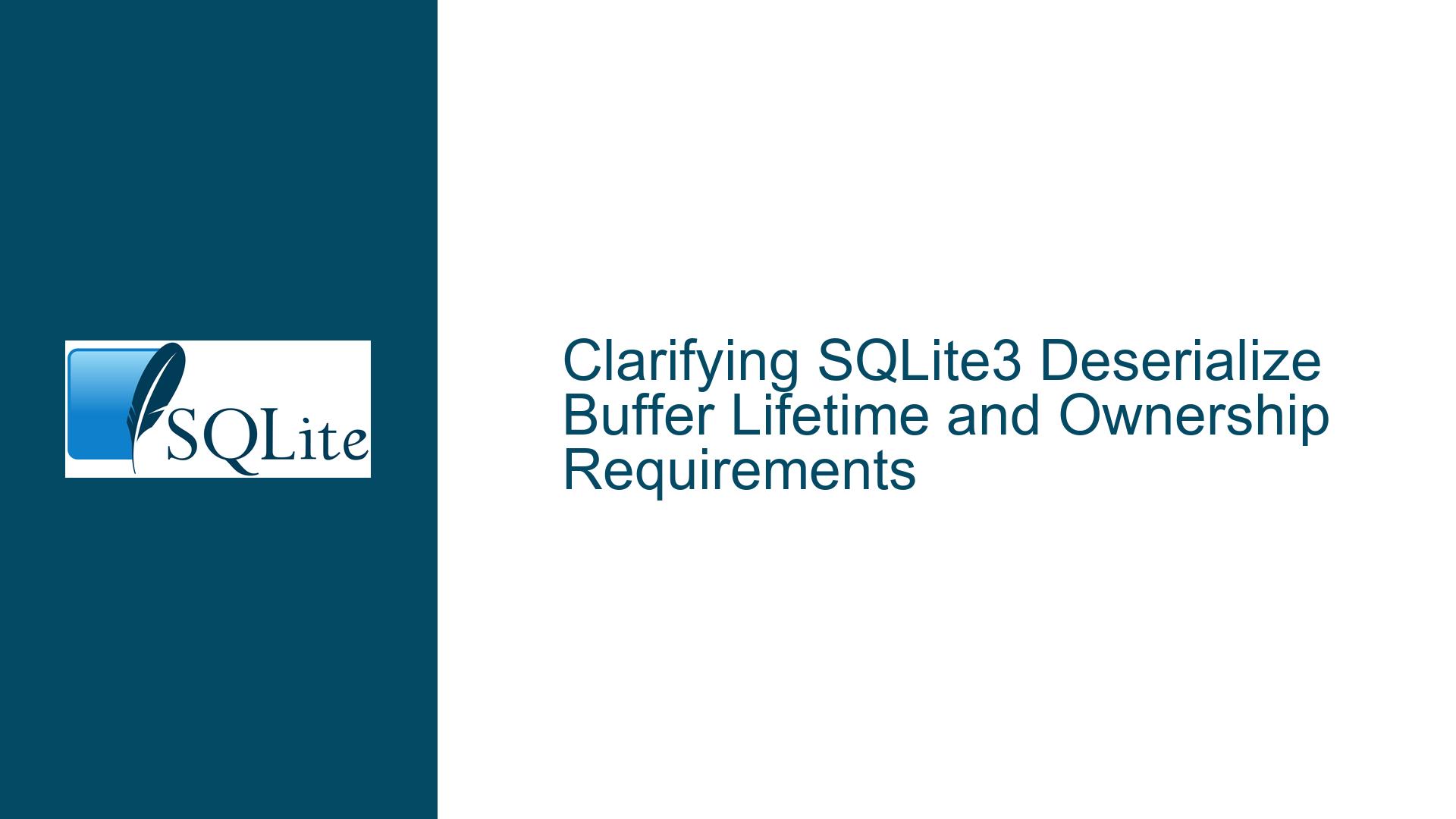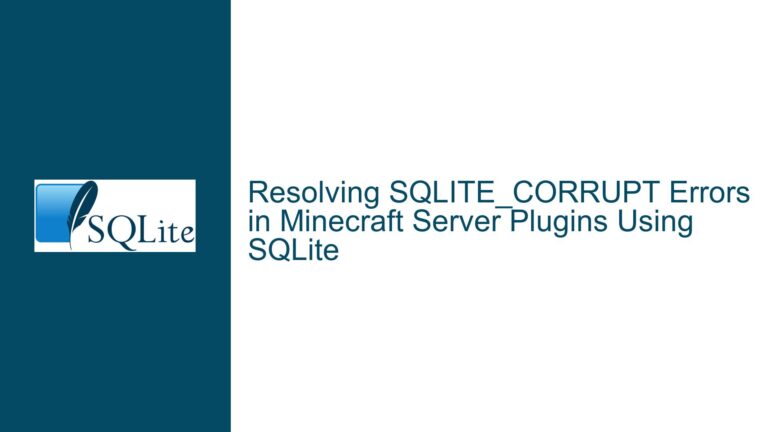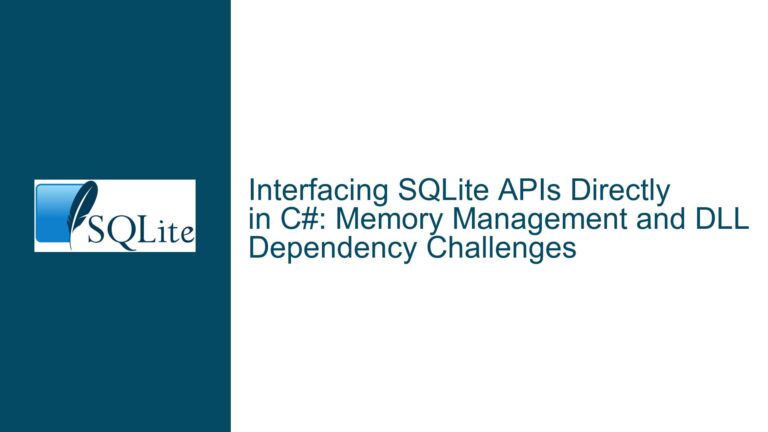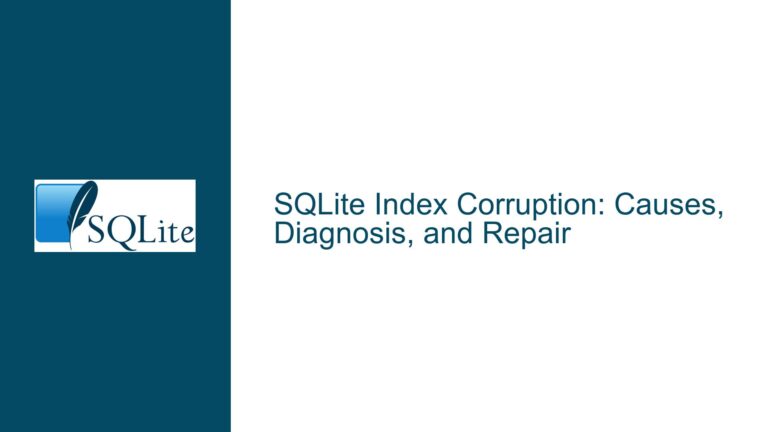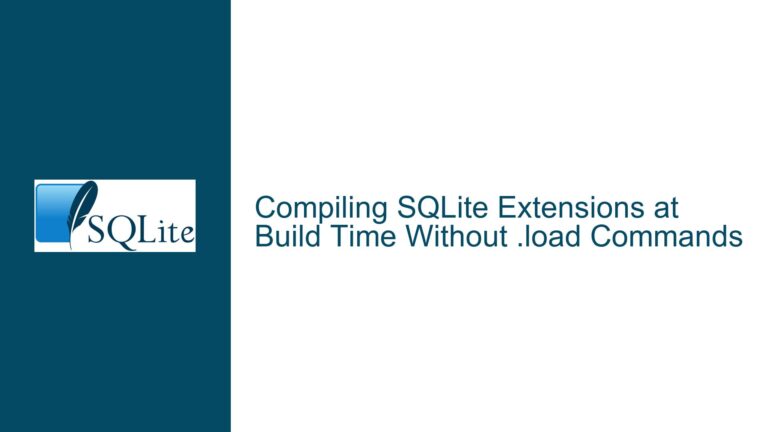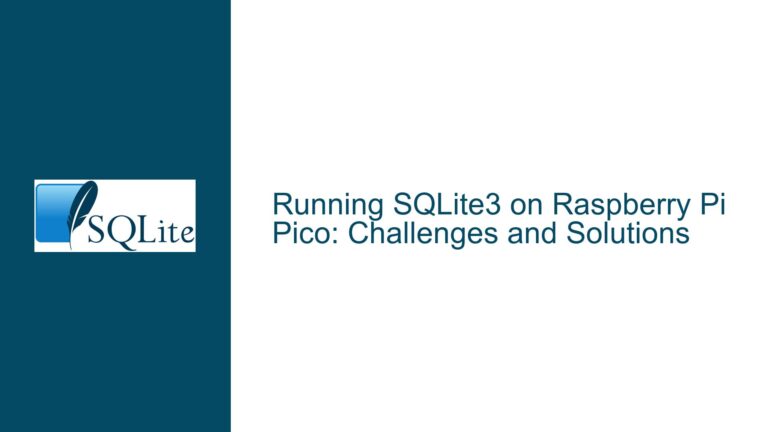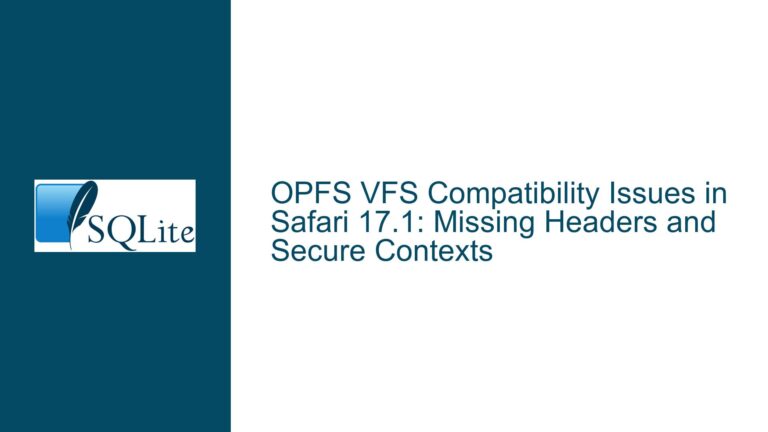Clarifying SQLite3 Deserialize Buffer Lifetime and Ownership Requirements
Buffer Lifetime Assumptions and Ownership Transfer in SQLite3 Deserialize API
The sqlite3_deserialize() function enables developers to initialize an in-memory database connection using a pre-existing buffer containing serialized database content. This buffer, provided via the pData parameter, is directly adopted by SQLite as the underlying storage for the database. The critical aspect of this API—often misunderstood due to insufficient documentation—is the buffer’s required validity period. SQLite assumes that pData remains a valid, unmodified memory region for the entire lifetime of the database connection. This includes scenarios where the database is opened in read-write mode (without the SQLITE_DESERIALIZE_READONLY flag), allowing modifications to the buffer during transaction commits, rollbacks, or explicit sqlite3_serialize() calls.
When SQLITE_DESERIALIZE_READONLY is not specified, SQLite treats the buffer as mutable and uses it as the primary storage for all database operations. This means any changes to the database (INSERT, UPDATE, DELETE) directly alter the contents of pData. Consequently, invalidating the buffer (via deallocation, reallocation, or reuse) before closing the connection results in undefined behavior, including segmentation faults, data corruption, or exploitation vectors arising from memory safety violations. Even in read-only mode, the buffer must remain accessible, as SQLite may read from it during query execution or internal maintenance operations.
The confusion arises because the API’s documentation historically omitted explicit statements about these requirements. Developers accustomed to APIs where buffers are copied (rather than directly adopted) may erroneously assume that sqlite3_deserialize() only needs the buffer during the function call. This misunderstanding is particularly dangerous in memory-unsafe languages like C/C++ or when interfacing with higher-level languages (e.g., Rust, Python) where buffer lifetimes are managed automatically. For example, passing a stack-allocated buffer or a short-lived heap buffer to sqlite3_deserialize() will cause catastrophic failures if the connection outlives the buffer.
Risks of Misaligned Buffer Management and Read-Only Misinterpretations
A common pitfall stems from misinterpreting the role of the SQLITE_DESERIALIZE_READONLY flag. Developers might assume that marking a database as read-only absolves them from ensuring the buffer’s long-term validity. However, even read-only connections require the buffer to persist until connection closure. SQLite does not copy the buffer contents; it relies on the pointer remaining valid, regardless of the database’s write permissions. The read-only flag merely prevents modification of the buffer through SQL operations—it does not alter the buffer’s lifetime requirements.
Another risk involves the interaction between sqlite3_serialize() and sqlite3_deserialize(). When sqlite3_serialize() is called with the SQLITE_SERIALIZE_NOCOPY flag, it returns a pointer to the internal buffer managed by SQLite. If this pointer is later passed to sqlite3_deserialize(), developers might incorrectly assume that SQLite retains ownership or extends the buffer’s validity. In reality, the serialized buffer’s lifetime is tied to the original connection. Closing the original connection invalidates the buffer, making subsequent deserialization from it unsafe. This interplay between serialization and deserialization is not immediately obvious, leading to use-after-free errors if connections are closed in an unexpected order.
Additionally, higher-level abstractions (such as ORMs or language-specific bindings) may inadvertently introduce lifetime management issues. For instance, in the referenced Rust PR, the proposed implementation allowed passing a slice (&[u8]) with an arbitrary lifetime. If the slice’s data resides in a temporary buffer (e.g., a stack array or a soon-to-be-dropped heap allocation), the SQLite connection would retain a dangling pointer, leading to memory corruption. Such issues highlight the importance of strictly coupling the buffer’s lifetime to the connection’s lifetime in API design.
Mitigating Risks Through Documentation Clarity and Buffer Lifetime Enforcement
To prevent these issues, developers must adhere to strict buffer management practices and leverage updated documentation that explicitly outlines SQLite’s expectations. The following strategies ensure safe usage of sqlite3_deserialize():
Explicit Lifetime Coupling: Always ensure that the buffer provided to
sqlite3_deserialize()exists for the entire duration of the database connection. In C/C++, this requires avoiding stack allocation and ensuring heap-allocated buffers are not freed prematurely. In managed languages like Rust, use constructs likeBox::leak()orArc(with static lifetimes) to enforce buffer persistence. For example:let data: Vec<u8> = load_serialized_database(); let data_ptr = Box::leak(data.into_boxed_slice()).as_ptr() as *mut u8; let rc = unsafe { sqlite3_deserialize( db, "main", data_ptr, data.len() as i64, data.len() as i64, SQLITE_DESERIALIZE_READONLY | SQLITE_DESERIALIZE_RESIZEABLE ) };Here,
Box::leakensures the buffer remains valid until explicitly reconstructed, which should coincide with connection closure.Documentation Enhancements: The SQLite documentation for
sqlite3_deserialize()should unambiguously state:- The
pDatabuffer must remain valid and unmodified until the connection is closed. - The
SQLITE_DESERIALIZE_READONLYflag prevents SQL-driven modifications but does not relax buffer lifetime requirements. - Modifying the buffer externally (even in read-write mode) bypasses SQLite’s transaction mechanisms, risking database corruption.
- The
Connection Closure Handlers: Implement connection close hooks that automatically invalidate or free the deserialized buffer. For example, in a wrapper library:
void close_connection(sqlite3* db) { void* user_data = sqlite3_user_data(db); sqlite3_close(db); free(user_data); // Free buffer after connection closure }This couples the buffer’s deallocation with the connection’s lifecycle.
Validation and Static Analysis: Use static analysis tools to detect mismatched buffer and connection lifetimes. For Rust’s SQLx, enforce that buffers passed to deserialize have a
'staticlifetime, preventing temporary buffers from being used.Serialization-Deserialization Workflow: When round-tripping databases via
sqlite3_serialize()andsqlite3_deserialize(), use theSQLITE_SERIALIZE_NOCOPYflag cautiously. Ensure the source connection remains open until all dependent deserialized connections are closed. Prefer explicit copies when ownership cannot be guaranteed.
By integrating these practices, developers can avoid memory safety pitfalls while leveraging SQLite’s deserialization API for high-performance, in-memory database workflows. Clarity in documentation and strict adherence to buffer lifetime management are paramount to safe and effective usage.
